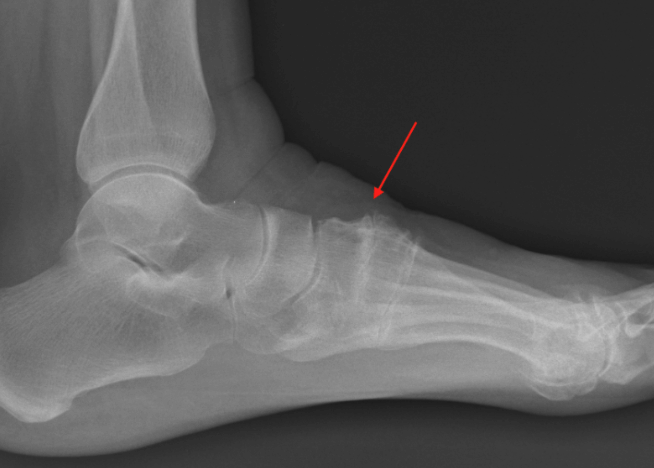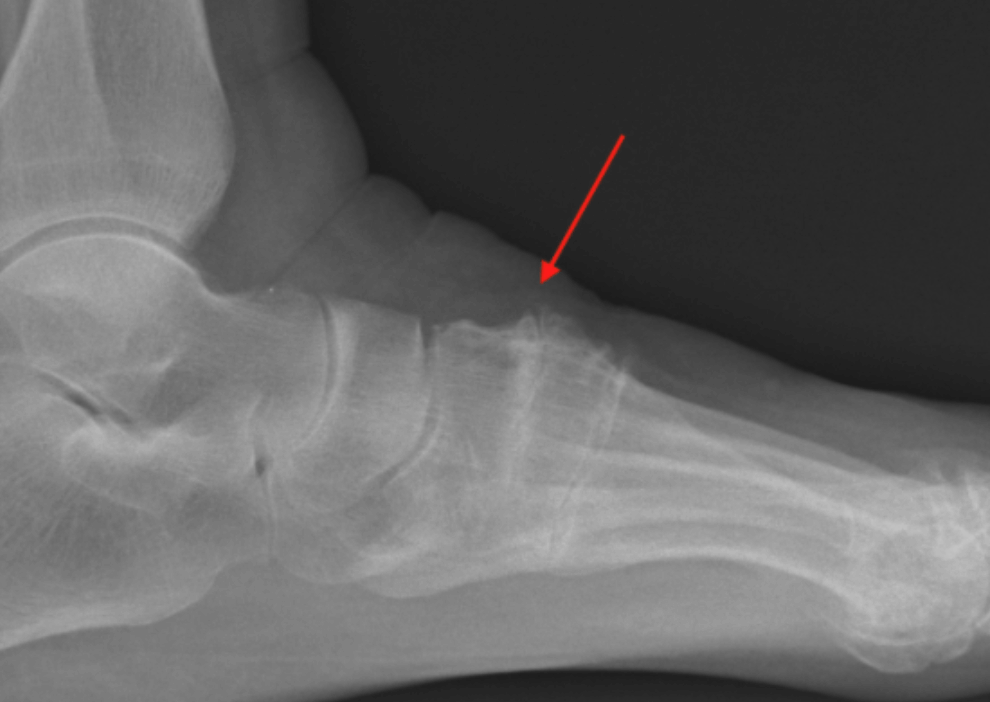midfoot arthritis
Displaying items by tag: midfoot arthritis
Dr. Timothy Young discusses the Adductoplasty Procedure for Midfoot Arthritis: A Comprehensive Guide
What is Adductoplasty? Adductoplasty is a surgical procedure designed to treat midfoot arthritis by realigning the bones in the midfoot region. It specifically targets the midfoot joints, such as the 2nd and 3rd metatarsal cuneiform joints (also known as the tarsometatarsal joints or TMT joints), which are commonly affected by arthritis. The goal of the adductoplasty procedure is to correct deformities, alleviate pain, and improve joint function and address arthritis joint pain.
Who Can Benefit from Adductoplasty? Adductoplasty is typically recommended for individuals with moderate to severe midfoot arthritis that hasn't responded adequately to conservative treatments. Common symptoms that may indicate the need for adductoplasty include persistent pain, stiffness, swelling, and difficulty walking or bearing weight on the affected foot.
The Procedure:
- Preoperative Assessment: Before undergoing adductoplasty, patients undergo a thorough preoperative assessment, including imaging studies like X-rays or MRI scans to evaluate the extent of arthritis and deformity.
- Anesthesia: Adductoplasty is performed under general anesthesia or IV sedation type anesthesia, depending on the patient's health and surgical preferences.
- Incision and Access: The surgeon makes an incision on the affected foot to access the midfoot joints. Minimally invasive techniques may be used to minimize tissue damage and promote faster recovery.
- Bone Realignment: Using specialized instruments, the surgeon realigns the bones in the midfoot to correct deformities and restore proper joint alignment. This will involve removing damaged cartilage or bone spurs.
- Stabilization: Additional procedures like joint fusion are necessary to stabilize the joint and promote healing.
- Closure and Recovery: Once the procedure is completed, the incision is closed, and the foot is bandaged. Patients are monitored in the recovery room before being transferred to a hospital room or discharged home, depending on the surgical plan.
Recovery and Rehabilitation: The recovery timeline for adductoplasty varies depending on the individual and the extent of the procedure. However, here are general guidelines:
- Postoperative Care: Patients are advised to keep the foot elevated and apply ice to reduce swelling and discomfort.
- Weight-Bearing: The surgeon will provide instructions on when and how much weight can be placed on the foot. Crutches or a walking boot may be recommended initially.
- Physical Therapy: Rehabilitation typically involves physical therapy to improve strength, flexibility, and mobility. Patients learn exercises to restore function and prevent stiffness.
- Follow-Up Visits: Regular follow-up visits with the surgeon are essential to monitor healing, address any concerns, and adjust the rehabilitation plan as needed.
Benefits of Adductoplasty:
- Pain Relief: Adductoplasty can significantly reduce pain and discomfort associated with midfoot arthritis, allowing patients to engage in daily activities more comfortably.
- Improved Function: By correcting deformities and realigning the bones, adductoplasty improves joint function, enhancing overall quality of life.
- Long-Term Results: Many patients experience long-lasting benefits from adductoplasty, especially when combined with postoperative rehabilitation and lifestyle modifications.
Conclusion: Adductoplasty is a valuable surgical option for individuals suffering from midfoot arthritis, offering pain relief, improved joint function, and enhanced quality of life. If you're considering adductoplasty or exploring treatment options for midfoot arthritis, consult with a qualified orthopedic surgeon to determine the best course of action based on your specific needs and goals. With proper care, rehabilitation, and follow-up, adductoplasty can pave the way for a more active and pain-free lifestyle.
If you have any questions or would like a consultation please call 425-391-8666 and make an appointment online.
Dr. Timothy Young
Foot & Ankle Surgeon
Issaquah's Top Podiatrist
Dr. Timothy Young, a Board Certified Foot Surgeon, Discusses Treating Midfoot Arthritis

Dr. Timothy Young a board certified foot surgeon, discusses treating midfoot arthritis.
This can be a difficult access or find the correct entry point, therefore we use ultrasound guidance to verify correct placement of the synthetic join lubricant. There is some communication between these adjacent midfoot articulations or joints and therefore there is additional benefit by injecting the second metatarsal–cuneiform joint to some of the adjacent communicating joints. We typically use Supartz which is a highly purified form of hyaluronic acid. I typically use the same protocol for other joints such as the ankle joint which is a series of injections at 1 to 2 week intervals usually 3 to 5 injections.
If you are experiencing foot or ankle pain, give us a call today at 425-391-8666 or make an appointment online today.
Dr. Timothy Young, a Board Certified Surgeon Talks About Midfoot Arthritis.

As we all get older there will always be some degenerative arthritic changes. One of the more common type is degenerative joint disease. This primarily affects the weightbearing joints of the body including the foot. In addition to normal wear and tear, some individuals have a foot structure that is much more prone to increased and disproportionate stress loads through the midfoot. The stress loads are one of the biggest factors leading to long-term arthritis of the foot. For example, an individual that has a large bunion, will often have poor mechanics and weightbearing function of the first metatarsal-this bone is designed to bear up to half the weight of the whole foot especially through propulsion and push off during gait. When this does not happen, a disproportionate stress load goes through the next in line second metatarsal. Eventually that stress load can manifest at the base of the second metatarsal where it articulates with the second cuneiform.
Over time this increased and disproportionate stress load causes premature and excessive wearing through this joint. Initially there is dorsal compression on the joint causing bone spurs on the top of the joint and increased wear and tear on the articular surfaces with thinning of the articular cartilage. Eventually this can become bone-on-bone. In mild and moderate early cases this can be treated mechanically with orthotics and appropriate shoes. As it becomes more pronounced and more severe than additional treatment options can be considered. At the moderate stage often times sympathetic joint lubricant can be utilized. It is critical to use ultrasound imaging to make certain that this synthetic joint lubricant goes directly into the appropriate joint. Our clinic typically utilizes supartz brand sympathetic joint lubricant. This same highly viscous solution is used, only in the knee and that is where the initial studies for utilization were done. If it is primarily a problem with a painful bone spurs on top then these can be surgically removed. However, usually this is just the tip of the iceberg and in severe cases the second metatarsal–cuneiform joint should be surgically treated with a fusion. This stabilizes the joint and illuminates the damaged cartilage and excessive motion here.
Give us a call today at 425-391-8666 or make an appointment online today.



